Ask Ethan: how many planets did Kepler see?
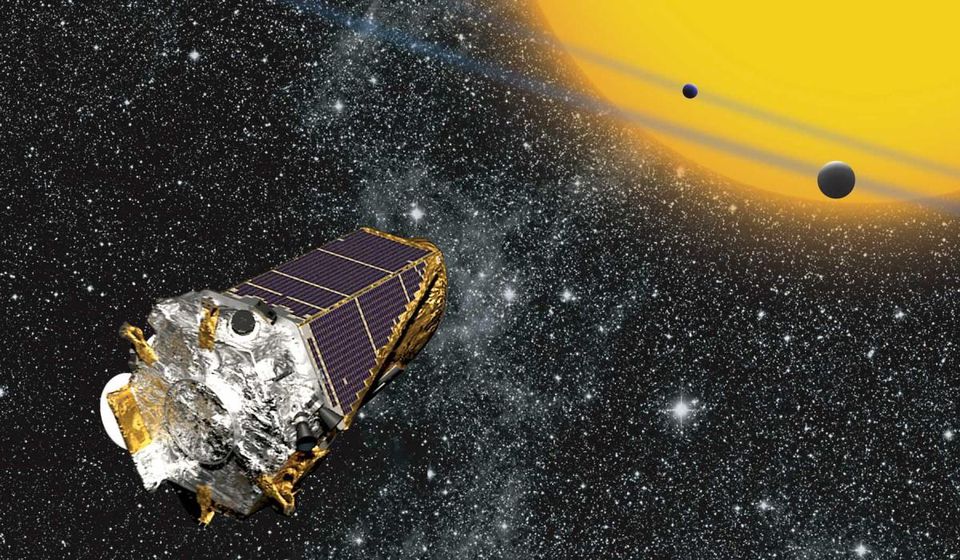
Image of the Kepler telescope
How many planets are there in our galaxy? 30 years ago, the answer to this question lay in the area of pure speculation, because then we had not yet found a single planet outside the solar system. If you rewind today, it turns out that we have already found thousands of such planets directly - and most of them are open to the mission of NASA Kepler . But despite all the successes of Kepler and all these new discoveries, the most interesting are the planets that he missed. And how many of them? Our reader Rudi Siegel (not a relative) wants to know:
Since Kepler uses the transit method to detect exoplanets , how many of them do we miss because of the mismatch of the ecliptic planes?
The answer consists of two parts: we missed 99% of such planets, but the reason for missing most of them is in no way connected with the alignment of the ecliptic.

Varieties of planets discovered by Kepler. Planets to large size and proximity to a star
The Kepler telescope worked on the principle of observing a small portion of our Galaxy on a daily basis for three years, until the time of the preliminary mission was out. He looked at one of the sections of one spiral arm, and, despite the narrow field of view, he observed 150,000 stars immediately, tracking tiny periodic changes in their brightness. Specifically, if the star became a little dimmer for a short period of time, and then returned to its original brightness, after which such a cycle was repeated after some time, this event was noted as a candidate for a planet.
')
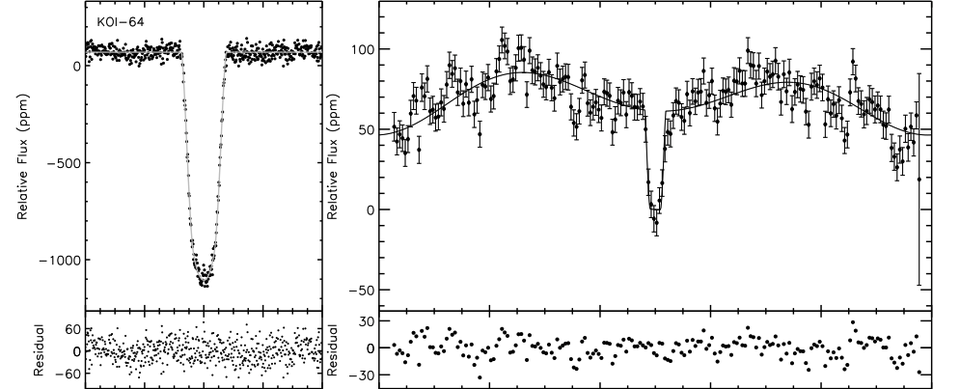
On the left - the main transit, on the right - the detection of exoplanets KOI-64
This method is known as the transit method of opening exoplanets. The orientation of solar systems relative to ours can be any, but sometimes we find one in which the planet, moving around a star that is in direct line of sight from our point of view, crosses this line. But a temporary decrease in brightness can cause other phenomena:
- Flying asteroid from the Kuiper belt inside our solar system;
- The orphan planet in the depths of interstellar space;
- A double star system in which one of them covers the other;
- The internal variability of the luminosity of the star itself - for example, a large cold dark spot.
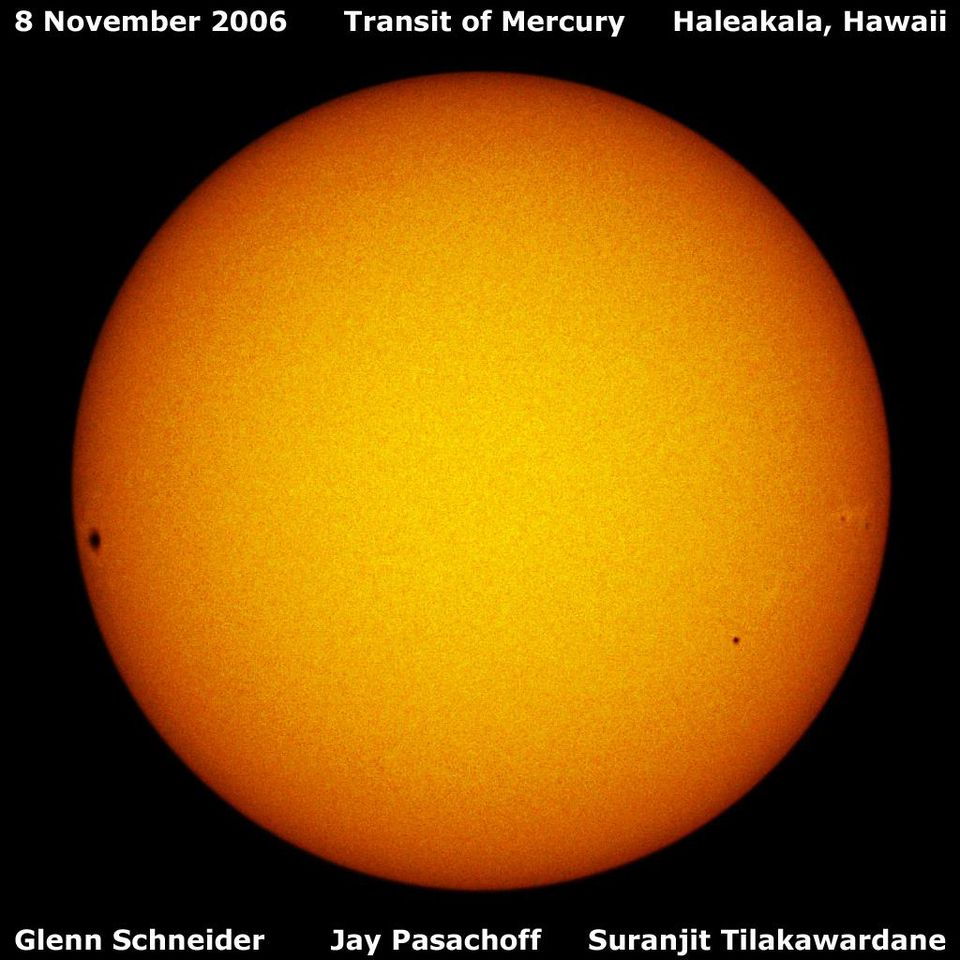
In 2006, Mercury passed through the Sun, but a large spot on the solar disk reduced its luminosity much more.
But if this failure in luminosity of the same magnitude is repeated again, and even more so - several times, it becomes an excellent candidate for subsequent observation using a different method. About half of the planetary candidates identified by Kepler have so far proved to be real planets - and there are already several thousand of them. For 150,000 investigated stars in Kepler’s field of view, this is not so much. And the reader's intuition was right - the coincidence of the ecliptic really influences this.
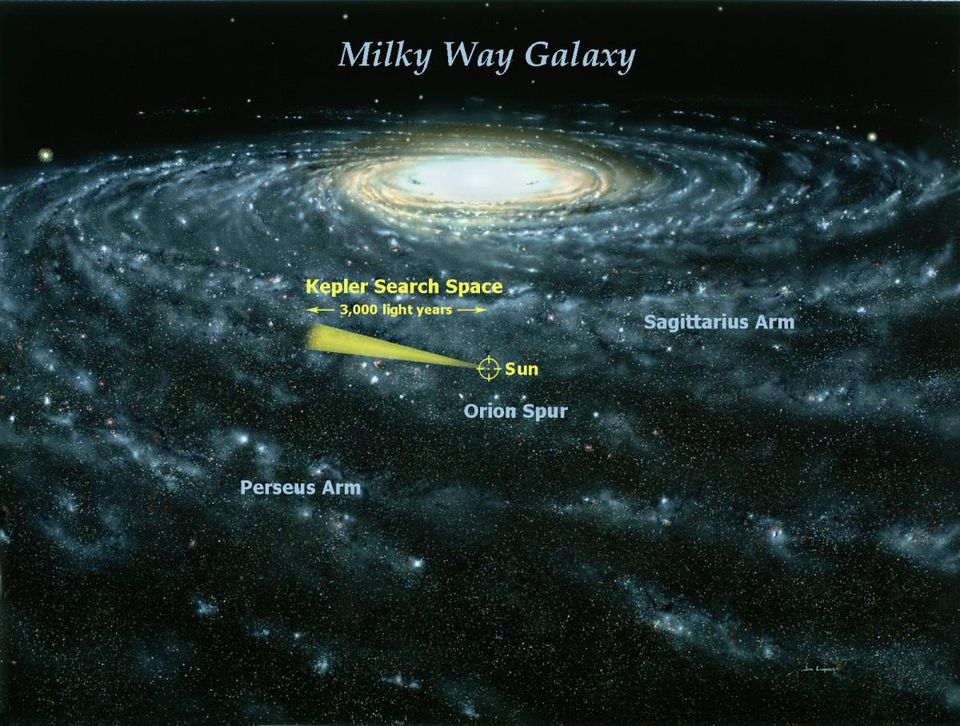
In the field of view, Kepler had about 150,000 stars, but only a few thousand had recorded the passages. In theory, almost all of these stars should have planets.
Stars can be quite large bodies - even the smallest of them exceed 100,000 km in diameter, but the distances to their planets are huge, from millions to billions of kilometers along the main semiaxis. In our solar system, the nearest planet to the Sun is Mercury, which often passes through the solar disk. But this is only because all the planets in the solar system are approximately in the same plane! If we were outside the solar system, we would be in a random orientation with respect to the ecliptic plane, and only from a small fraction of the directions could we see the passage of Mercury.
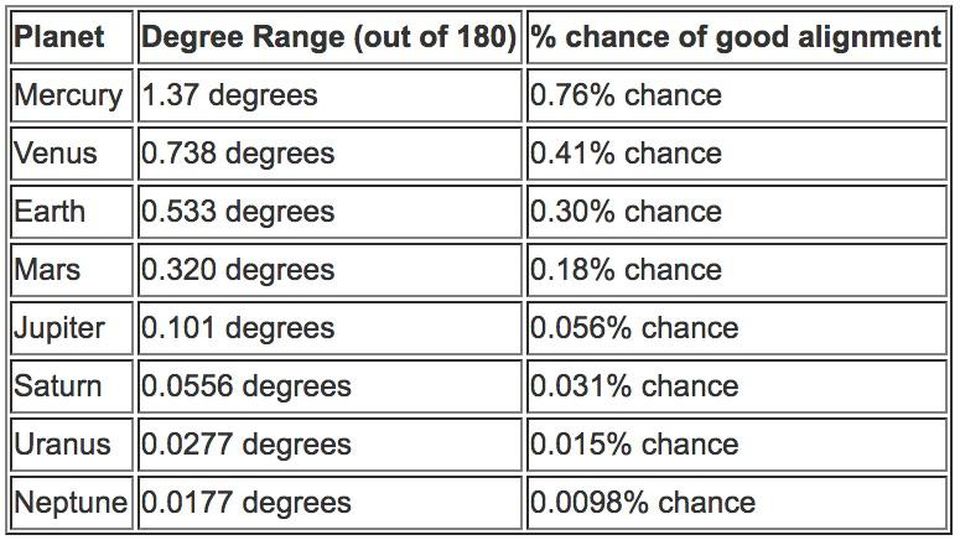
Planets / degree range / chance for a successful coincidence of the planes.
From a random place in space, given the relative size and orbital distance to each planet, compared with the Sun, you can calculate the chances of seeing the passage. The farther away from the sun, the lower the chances. When calculating the table does not take into account the time and size.
We can calculate this fraction for each planet from the solar system, and find that the closer we are to a star, the greater our chances. Even Mercury has less than 1% chance of being in the same plane with the observer, and by the time you move to the orbit of Jupiter, the chances are equal to 1 by 2000. Obviously, Kepler misses most of the planets, and the passage orientation plays a big role here.
But there are other factors, the importance of which may be even greater.
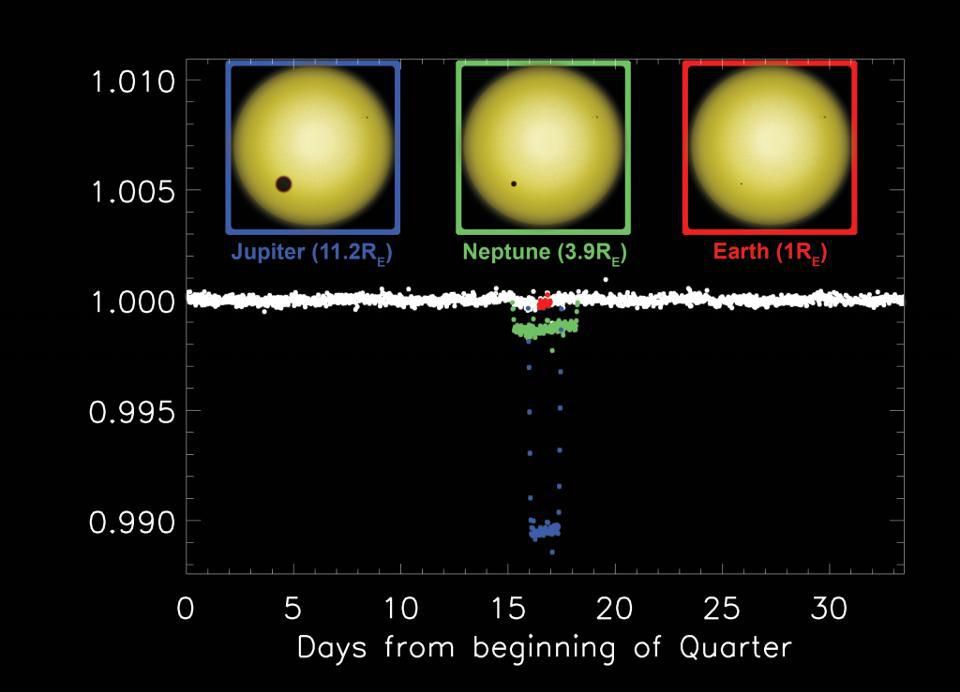
Kepler developed to observe the passage of the planets, but even a large planet moving around a star can block only a small fraction of its light, reducing its brightness by no more than 1%. The smaller the planet is relative to its parent star, the more passages you need to catch in order to get a reliable signal.
Size also plays a big role - the size of a passing planet in relation to its parent star. If an exoplanet closes 1% of the surface of the parent star during the passage, Kepler will easily see it. If it covers 0.1% of the surface, it will need to go in orbit 10 times to accumulate a signal with comparable reliability. 100% of the planets the size of Mercury are too small to be seen near the sun-like stars. The same is true for planets the size of Mars. The easiest way to see the largest planets in orbit around the smallest stars is precisely what Kepler discovered.

The number of planets discovered by Kepler, sorted by size, as of May 2016, when scientists released the largest list of planets. Most often, there are planets like super-Earth or mini-Neptune, and only a small fraction of the planets are larger than the Earth.
Finally, there is a matter of time. Kepler’s mission lasted three years, so she could detect several passages of those planets that made a complete turn, more often. All gas giants in our solar system, despite their size, would remain invisible to Kepler! If we put it all together, we will see a few basic parameters that must come together in order for Kepler to discover the planet:
- The orientation of the planetary system must be sufficiently good for the observed world to make its passage on the disk of its star from our point of view.
- The planet must be large enough relative to the size of the star, such that it blocks a lot of light in a given number of passes.
- The planet must be close enough to the parent star to make at least two passes during the observation period.
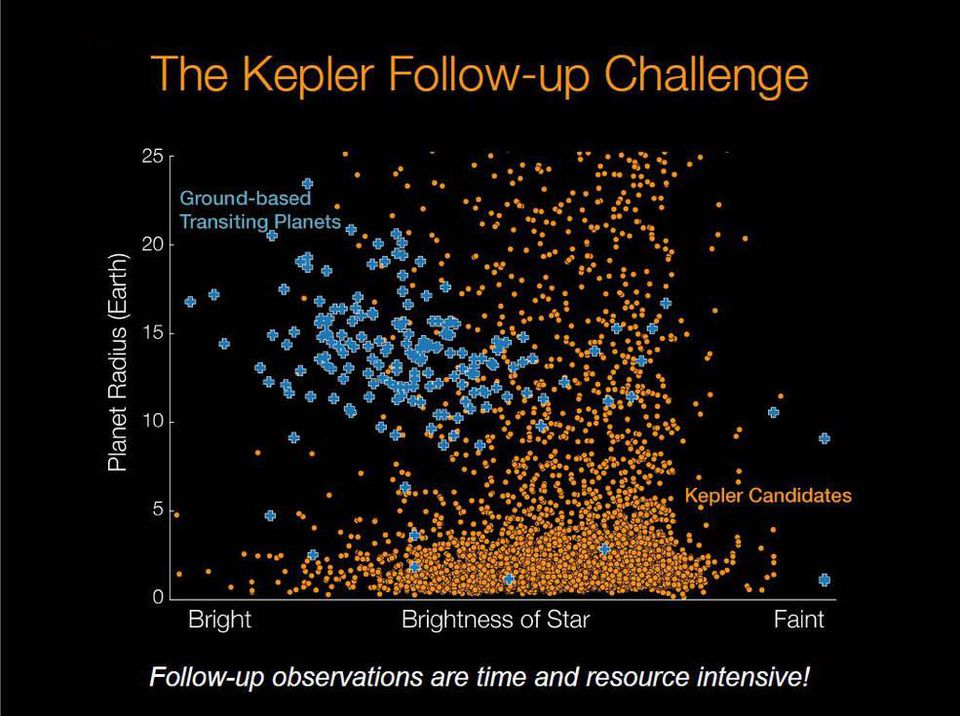
Although Kepler found planets of terrestrial size, most of the open planets turned out to be larger than the Earth and located closer to their star than the Earth - just such planets are the easiest to find.
There is a great temptation to extrapolate the number of planets based on those found and calculate how many planets should be based on the number of stars in the galaxy, but we simply have no data for this. We measured a whole mountain of planets, and based on the ratios of the distance and the orbital period, we can confidently say that the ratio of the number of planets to the number of stars is at least 1000 times larger than we saw. But we do not have enough data for the outer limits of the galaxy. Using the methods we have, we would have to do research for hundreds of years to understand which picture is typical. But there is another chance.

The conceptual diagram of the LUVOIR space telescope, which will be located at the L2 point of Lagrange, will deploy the main mirror with a diameter of 15.1 meters and begin studying the Universe, passing us untold wealth of knowledge on astronomy and science in general
The 30-meter telescopes like the Giant Magellan Telescope and the European Extremely Large Telescope must potentially be able to see the outer worlds directly, thanks to the light reflected by them, and the dream machine, LUVOIR, a class of 10-15 meters, can generously provide us with information about the planets that is impossible under the current technologies. [ LUVOIR is not a specific device, but simply a set of requirements and requests for new-level telescopes. Representative of this class is, for example, the project ATLAST , but it will be launched no earlier than 2035 / approx. trans. ]. And as long as we do not have certain data on what is in space, we can only impose lower limits and make estimates. It is now believed that there are trillions of planets in our galaxy - but we want not to assume, but to know. With moderate luck, not very large investments and a lot of hard work, we can get an answer to this question in just a few decades.
Ethan Siegel - astrophysicist, popularizer of science, blog Starts With A Bang! He wrote the books Beyond The Galaxy , and Treknologiya: Star Trek Science [ Treknology ].
FAQ: if the universe is expanding, why aren't we expanding ; why the age of the universe does not coincide with the radius of the observed part of it
Source: https://habr.com/ru/post/411075/
All Articles